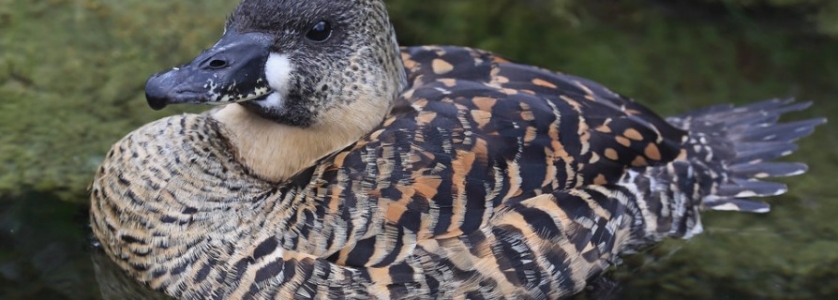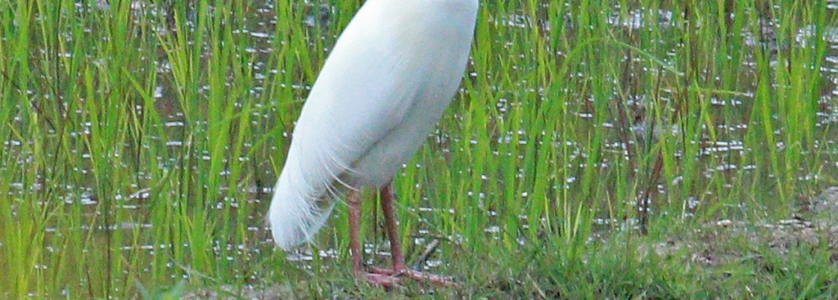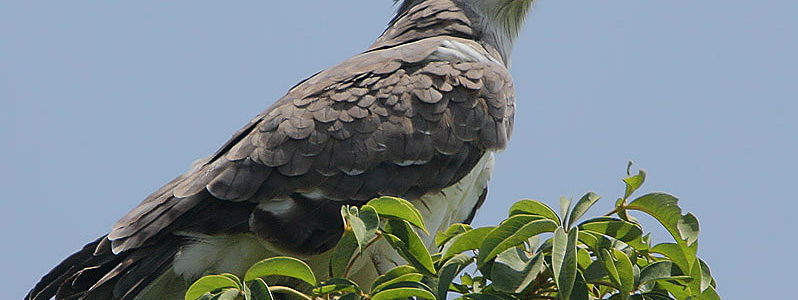

Pelicans are a genus of large water birds that make up the family Pelecanidae. They are characterised by a long beak and a large throat pouch used for catching prey and draining water from the scooped– up contents before swallowing.
They have predominantly pale plumage, the exceptions being the brown and Peruvian pelicans.
The bills, pouches and bare facial skin of all species become brightly coloured before the breeding season.
The eight living pelican species have a patchy global distribution, ranging latitudinally from the tropics to the temperate zone, though they are absent from interior South America and from polar regions and the open ocean.
Long thought to be related to frigate birds, cormorants, tropics birds and gannets and boobies, pelicans instead are now known to be most closely related to the shoebill and hamerkop and are placed in the order pelecaniformes.
Ibises, spoonbills, herons and bitterns have been classified in the same order.
Fossil evidence of Pelicans dates back at least 30 million years to the remains of a beak very similar to that modern species recovered from Oligocene (33.9 million to 23 million years before present) strata in France.They are thought to have evolved in the old world and spread into the Americas.
Pelicans frequent inland and coastal waters, where they feed principally on fish, catching them at or near the water surface.
Pelicans are gregarious birds, travelling in flocks, hunting cooperatively and breeding colonially.
Four white-plumaged species tend to nest on the ground and four brown or grey-plumaged species nest mainly in trees.
The origin or etymology of the Pericans
The genus pelecanus was first formally described by Linnaeus in 1758 in the 10th edition.
He described the distinguishing characteristics as a straight bill hooked at the tip, linear nostrils, a bare face and fully webbed feet.
This early definition included frigate birds, cormorants, and sulids as well as Pelicans.
The name Pelican comes from the Ancient Greek word “Pelekan” which is itself derived from the word “Pelekys” meaning “axe”.
Taxonomy of the Pericans
The family Pelecanidae was introduced by the French polymath Constantine Samuel Rafinesque in 1815.
Pelicans give their name to the Pelecaniformes, an order which has a varied taxonomic history.
Tropic birds, darters, Cormorants, gannets, boobies, frigate birds, all traditional members of the order have since been reclassified. The tropic birds into their ownorder; phaethoniformes, and the remainder into the suliformes.
Living species
The eight living Pelican species were traditionally divided into two groups, one containing four ground-nesters with mainly white adult plumage (Australian Pelican, Dalmatian Pelican, Great white Pelican and the American white Pelican).
Physical description of the Pericans
Pelicans are very birds with very long bills characterised by a down curved hook at the end upper mandible and the attachment of a huge gular pouch to the lower (Gular is an area of featherless skin on birds that joins the lower mandible of the beak to the bird’s neck).
The slender rami (lower jaw or mandible) of the lower bill and the flexible tongue muscles from the pouch into basket for catching fish and sometimes rainwater.
It has a tiny tongue though it swallows large fish.
They have a long neck and short stout legs with large, fully webbed feet.
Although they are among the heaviest of flying birds, they are relatively light for their apparent bulk because of air pockets in the skeleton and beneath the skin, enabling them to float high in the water.
The tail is short and square.
The wings are long and broad, suitably shaped for soaring and gliding flight.
They have the unusually large number of 30 to 35 secondary flight feathers.
Males are generally larger than females and have longer bills.
The smallest species is the Brown Pelican, small individuals of which can be no more than 2.75 kilograms and 1.06m long, with a wingspan of as little as 1.33m.
The largest pelican is believed to be the Dalmatian at up to 15kg and 1.83m in length with a maximum wingspan of 3m.
The Australian Pelican’s bill may grow up to 0.5m long in large males, the longest of any bird.
They have air sacs under their skin situated across the ventral surface including the throat, breast and undersides of the wings as well as having air sacs in their bones.
The air sacs serve to keep the Pelican remarkably buoyant (floating) in the water.
Behaviour and Reproduction process of the Pericans
Pelicans swim well with their strong legs and their webbed feet.
They rub the backs of their heads on their preen gland (oil glands) to pick up an oily secretion, which they transfer to their plumage to water proof it.
They hold their wings only loosely against their bodies, and float with relatively little of their bodies below the water surface.
They are gregarious and nest colonially.
Pairs are monogamous for a single season, but the pair bond extends only to the nesting area.
Males are independent away from the nest.
More posts for you

Over 50 excellent reviews on Safaribookings.
 >
> 




